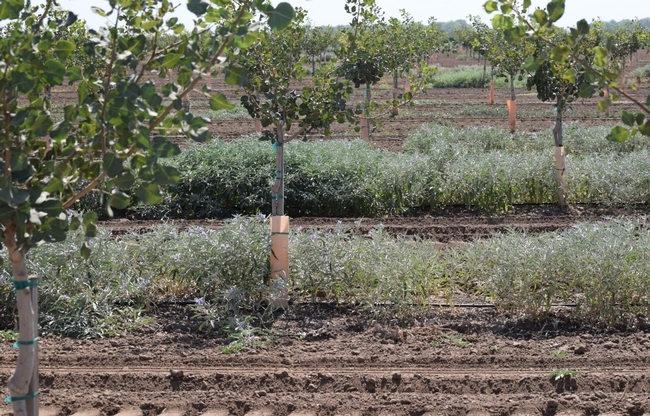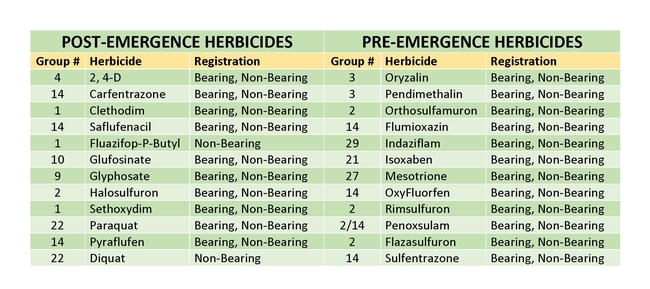Silverleaf nightshade, Solanum Elaeagnifolium, is perennial weed that is native to South America, Mexico, American Southwest and Southern States. This herbaceous and woody summer weed belongs to Solanaceae just like other weeds such as black nightshade (Solanum nigrum), hairy nightshade (Solanum physalifolium) and horsenettle (Solanum carolinense). It can be found throughout California and in grows in desert and semi-arid areas. Silverleaf nightshade is often found growing in different cropping systems, rangeland, pastures, roadsides, and disturbed areas. Silverleaf nightshade is highly adaptable and can tolerate a wide range of soil and climatic conditions such as high temperatures, low rainfall, saline and drought conditions. The leaves and berries produced by silverleaf nightshade plants have glycoalkaloid compounds that can be toxic to livestock and humans if consumed (UC IPM) (Boyd 1982).


Life Cycle

Impacts
Silverleaf nightshade is becoming a problematic weed in some young pistachio orchards in Tulare, Kings and West Fresno. This perennial weed is mostly found in young orchards that are planted on west Fresno and Kings County by interstate 5 highway (Figure 3). In Tulare County, silverleaf nightshade is found pistachio orchards that were planted in unmanaged fallow land or in fields near roadsides where it's commonly found. One of the major impacts of silverleaf nightshade is that it competes with young pistachio orchard for resources such as water, light and nutrients. If left unmanaged, silverleaf nightshade can also interfere with irrigation operations and potentially reduce crop vigor in young pistachio trees (Figure 2). Since silverleaf nightshade can adapt to alkaline and saline soils, it will also outcompete many of the summer annual weeds and become the dominant weed in the population.
Management
Silverleaf nightshade can be a weed that is difficult to control with the available management methods in orchards. Tillage is not recommended as that is one of the ways that rhizomes can be spread across the orchard (Ensby 2011). Mechanical control methods such mowing can be an effective control method to prevent weeds from setting seed. Flail mowers are often used in orchards and vineyards to mow weeds in between tree rows. It is important to note that, new silverleaf nightshade shoots will potentially sprout from the root system after the tops are mowed (Stanton 2011). Even though mowing can be an effective weed control method during the growing season, most commercial mowers will miss the weeds that grow in between trees that directly compete with young trees. Hand weeding can be used to remove some of the weeds around the trees, but extra precaution needs to be taken. Mature silverleaf nightshade plants are covered in reddish prickles that can be harmful if weeds are handled with bare hands. Weeding tools such as shovels and hula hoes can damage surface drip hoses if the user is not careful.
Herbicides can be an effective weed management method to control silverleaf nightshade in different tree crops. There are a twelve pre-emergent and thirteen post-emergent herbicides with different sites of action that are registered for use in pistachios (Table 1). Pre-emergent herbicides are normally applied during the dormant season and most only control weeds before they germinate. Pendimethalin, rimsulfuron, mesotrione, flumioxazin, isoxaben, and flazasulfuron are herbicides that have great control over black and hairy nightshade. Isoxaben can suppress silverleaf nightshade, but cannot be used in pistachios that have not been established for at least three years. Pre-emergent herbicides will not control silverleaf nightshade that emerges from rhizomes in the summer. Post-emergent herbicides can be used to control silverleaf nightshade that emerges in the summer and early fall before harvest. Glyphosate, glufosinate, pyraflufen, and carfentrazone are post-emergent herbicides with different sites of action that can be used to control different weeds and can be used up to two weeks before harvest. 2, 4-D is another post-emergent herbicide that is registered for use in pistachios, but needs to be applied to trees that have been established for at least one year and has a pre-harvest interval of 60 days. Research work from other researchers has shown that glyphosate and 2, 4-D have excellent control of silverleaf nightshade (DiTomaso 2013) (Gitsopoulos 2017). Glyphosate is a systemic herbicide that can potentially kill the root system of silverleaf nightshade, when applied at the correct timing and rate. Since Silverleaf nightshade has extensive rhizome root systems, the root systems need to be killed to fully control this weed. In the summer months, a combination of mowing and the use of post-emergent herbicides can kill the aboveground tissues of silverleaf nightshade weeds and deplete the root bank in the soil (Heap 2018). Post-emergent herbicides need adjuvants such as nonionic surfactants, crop and seed oils, to increase their efficacy. Furthermore, always consult the herbicide labels on information regarding information on the required adjuvants, pre-harvest intervals, application rates and maximum applications per seasons.
The weed management tools to control silverleaf nightshade in pistachio orchards are limited. Developing and maintaining field records before planting is a great way to determine the history of a field before planting. Conducting weed surveys in the winter and spring can help determine what weed species are present in a field. Silverleaf nightshade populations can be reduced by mowing in between tree rows and applying herbicides to weeds present in between trees. These management practices need to be done before the weeds set seeds to contribute to reduce the seedbank. To avoid introducing silverleaf nightshade to other fields, it is important to sanitize tractor equipment and manage the weeds that grow on the field edges or near irrigation canals (. To have an effective silverleaf nightshade management program, a combination of herbicides with different modes of action are needed decrease the possibility of it developing herbicides resistance. Silverleaf nightshade is difficult to control because of its tolerance to many herbicides (Gitsopoulos 2017). During the summer months, it is best to use a combination of systemic and contact post-emergent herbicides to get higher levels of control for silverleaf nightshade. To enhance the efficacy and herbicide absorption, post-emergent herbicides require adjuvants such as methylated seed oils, non-ionic surfactants, crop-oil concentrates, and nitrogen-based fertilizers.
Cited Literature
Boyd, J.W. and Murray, D.S. 1982. Growth and development of silverleaf nightshade (Solanum elaeagnifolium). Weed Science 30, 238-43.
DiTomaso, J.M., G.B. Kyser et al. 2013. Weed Control in Natural Areas in the Western United States. Weed Research and Information Center, University of California. 544pp.
Ensbey R. 2011. Noxious and environmental weed control handbook – A guide to weed control in non-crop, aquatic and bushland situations. 6th ed. New South Wales: Department of Trade and Investment, Regional Infrastructure and Services.
Gitsopoulos, Thomas & Damalas, Christos & Georgoulas, Ioannis. 2017. Chemical options for the control of silverleaf nightshade (Solanum elaeagnifolium). Planta Daninha. 35. 10.1590/s0100-83582017350100064.
Heap, J. & Wu, H. 2018. Silverleaf Nightshade: Australian best practice management manual. Primary Industries and Regions SA & NSW Department of Primary Industries: Adelaide.
Roberts J., Florentine. 2022. Biology, distribution and management of the globally invasive weed Solanum elaeagnifolium Cav. (silverleaf nightshade): A global review of current and future management challenges. Weed Res. 2022;62:393–403. doi: 10.1111/wre.12556.
Stanton, R. & Wu, Hanwen & Lemerle, D. 2011. Root regenerative ability of silverleaf nightshade (Solanum elaeagnifolium Cav.) in the glasshouse. Plant Protection Quarterly. 26. 54-56.

